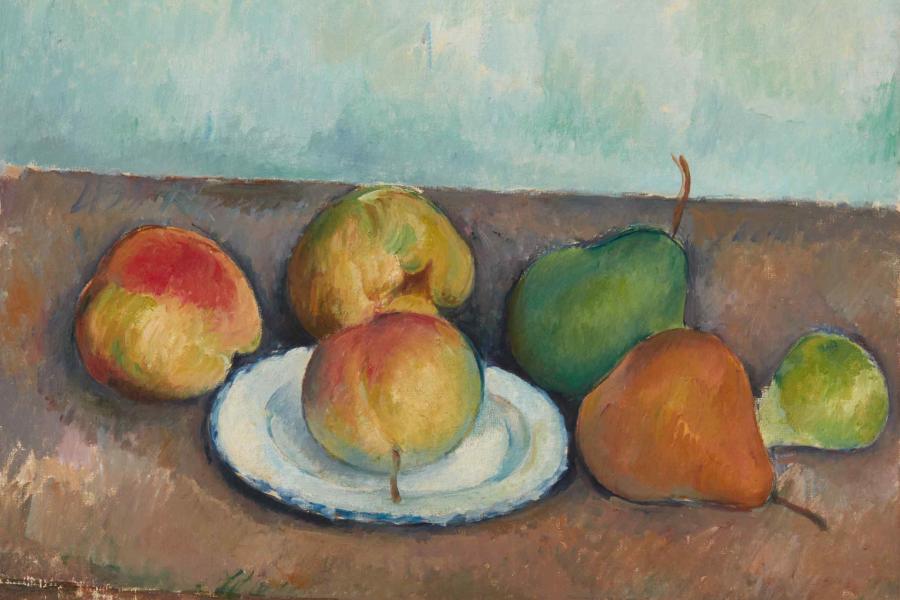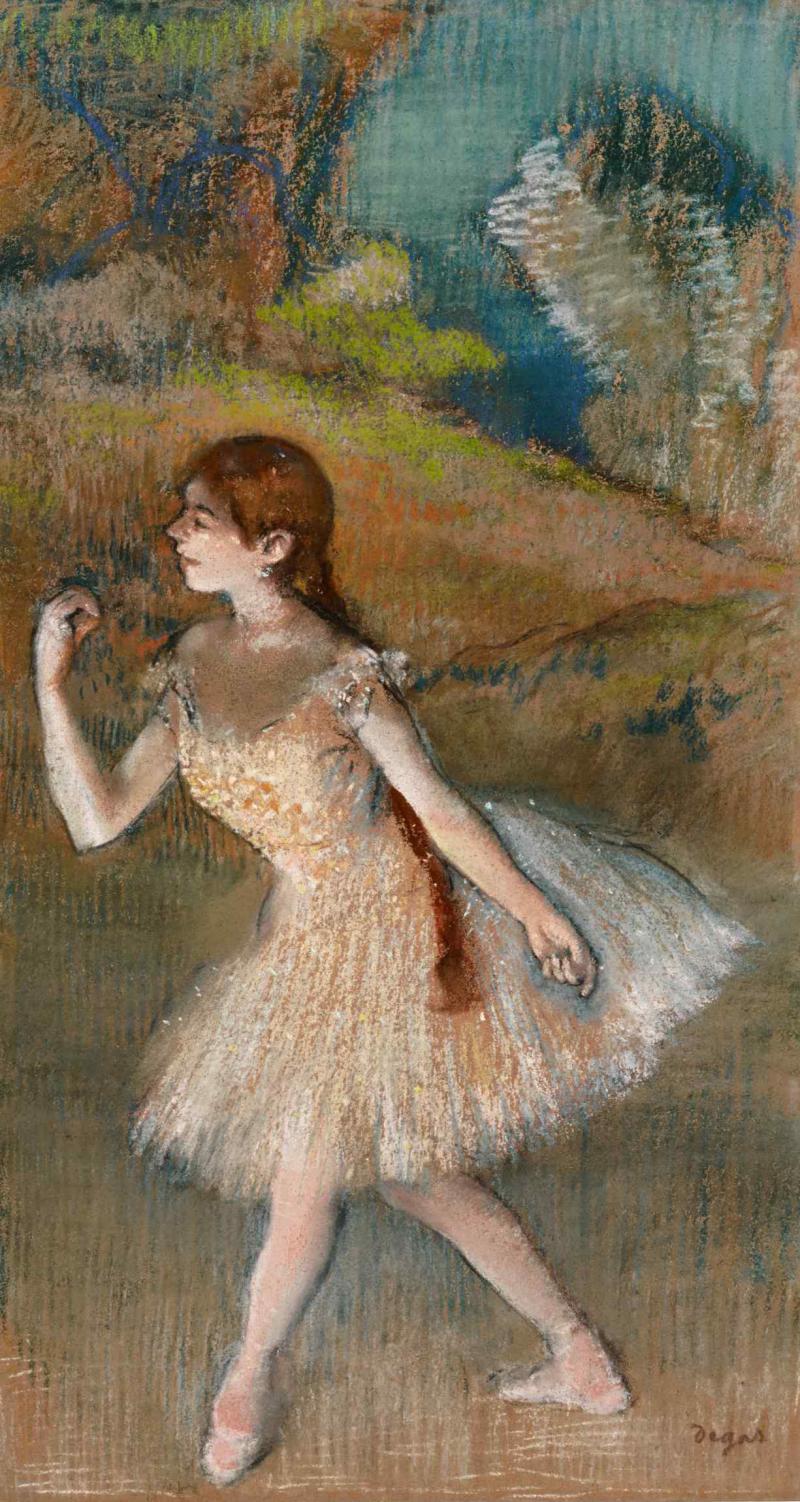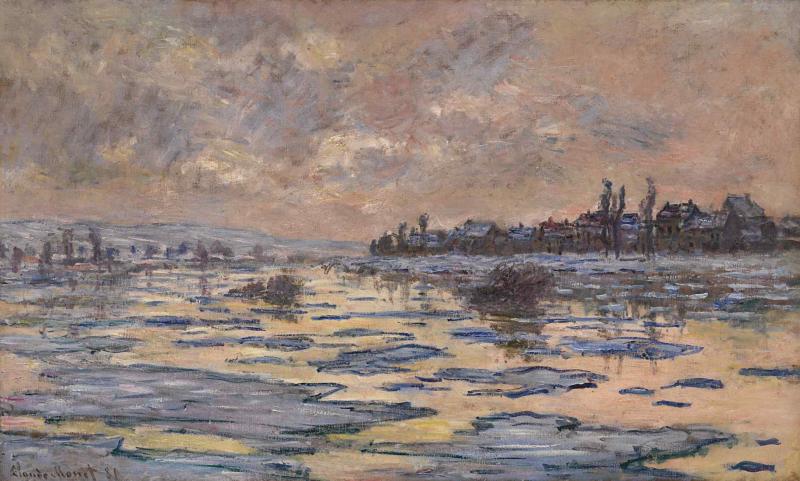Paul Cézanne’s Quintessential Still Life of Fruit, Among the Last Remaining in Private Hands: Nature morte: pommes et poires Estimate $25/35 Million
A Prime Example of Edgar Degas’…
 Paul Cézanne’s Nature morte: pommes et poires Estimate $25/35 Million - Mit freundlicher Genehmigung von: sothebys.com
Paul Cézanne’s Nature morte: pommes et poires Estimate $25/35 Million - Mit freundlicher Genehmigung von: sothebys.comPaul Cézanne’s Quintessential Still Life of Fruit, Among the Last Remaining in Private Hands: Nature morte: pommes et poires Estimate $25/35 Million
A Prime Example of Edgar Degas’…
Paul Cézanne’s Quintessential Still Life of Fruit, Among the Last Remaining in Private Hands: Nature morte: pommes et poires Estimate $25/35 Million
A Prime Example of Edgar Degas’s Celebrated Pastel Ballerinas, Formerly in the Collection of the Museum of Fine Arts, Boston: Danseuse Estimate $10/15 Million
Two Stunning Works by Impressionist Master Claude Monet:
An Extraordinary Landscape Previously in the George Vanderbilt Collection, La Seine à Lavacourt, Débâcle Estimate $6/8 Million
An Exquisite Floral Still Life, Fleurs dans un pot (Roses et brouillard) Estimate $4/6 Million
AUCTION 12 MAY IN NEW YORK
Following Sotheby’s Marquee Evening Auction of Contemporary Art And the Dedicated Sale for American Visionary: The Collection of Mrs. John L. Marion
Exhibition Open by Appointment Starting 1 May
NEW YORK, 13 April 2021 – From an exceptional and distinguished private collection, Sotheby’s Impressionist & Modern Art Evening Sale this May will be highlighted by masterworks from the defining Impressionist and Post-Impressionist French artists whose indelible bodies of work and artistic legacies shaped the course of Modern art history like no others: Paul Cézanne, Edgar Degas, and Claude Monet.
Cézanne’s Nature morte: pommes et poires (estimate $25/35 million) leads this outstanding group of four works. A poignant encapsulation of the artist’s greatest achievements, the dazzling canvas is an extremely rare example of the artist’s quintessential still lifes of this caliber remaining in private hands. With an illustrious provenance dating to epoque-defining dealer Ambroise Vollard, the painting stands unparalleled in today’s market.
The collection is also highlighted by one of the most harmonious and delicately rendered works of Edgar Degas’s singular ballerinas, Danseuse (estimate $10/15 million), which was once in the collection of the Museum of Fine Arts, Boston for nearly 70 years. Additionally, there are two stunning canvases by Claude Monet: La Seine à Lavacourt, Débâcle (estimate $6/8 million), one of the artist’s first series paintings, formerly in the collection of George Vanderbilt II and once hung at the Biltmore Estate; and Fleurs dans un pot (Roses et brouillard) (estimate $4/6 million) from 1878, a rare example of a floral still life by the artist, formerly in the collection of James F. Sutton, founder of the American Art Association, and Ogden Phipps, the storied American collector.
Taking place Wednesday, 12 May in New York, the Impressionist & Modern Art Evening Sale will follow Sotheby’s marquee auctions for American Visionary: The Collection of Mrs. John L. Marion and Contemporary Art in a blockbuster series of auctions this spring. A pre-sale exhibition for all three Evening Sales will be open by appointment beginning 1 May at Sotheby’s York Avenue galleries in New York. The present works will be on view in Hong Kong from 16-21 April at the Hong Kong Exhibition Center alongside highlights from Sotheby’s marquee sales of Chinese Works of Art, Chinese Paintings, Classical Chinese Paintings, Modern Art, Contemporary Art, Important Watches, and Magnificent Jewels.
Scott Niichel, Co-Head of Sotheby’s Impressionist & Modern Art Department in New York, said: “We are honored and delighted to present this exceptional group this May, presenting each work on the market for the first time in decades. This rich, thoughtful and charming collection represents three of the most radical and profoundly important artists working in Europe in the late 19th century, with images that embody the very pinnacle of the Impressionist and Post-Impressionist movements, each – and particularly Cézanne’s superlative still life – building a critical bridge to the later artistic developments that would come to define Modernism and transform the history of art as we know it. From Cézanne’s sumptuous still life of his iconic apples and pears, to Degas’s celebrated ballerina, to Monet’s unrivaled interpretation of nature, color and light, this group embodies the very best of French art of the late 19th century, and its appearance at auction represents an historic opportunity for collectors around the world.”
One of the purest distillations of Cézanne’s craft, Nature morte: pommes et poires is a masterful example of the artist’s mature still lifes of the late 1880s and 1890s and stands among his simplest yet most powerful and elegant arrangements.
Such modest arrangements of apples, pears, tables, and ceramics fascinated Cézanne throughout his decades-long career and chart the progression of his artistic development. From the artist’s early investigations, which aimed to shock audiences through an ambitious and singular handling of paint, to the complex and painstakingly crafted output of his last decade, Cézanne continually reinvented his still lifes, exhibiting ever more experimentation and nuance with each canvas. Incorporating a relatively narrow range of elements in each composition and often utilizing the same recognizable fabrics, baskets and pitchers, Cézanne rearranged and reimagined each ensemble, resulting in new spatial relationships underscored by an experimental focus on fundamental formal qualities.
Unlike some of Cézanne’s earlier works, which faithfully transcribed the appearance of the furnishings, paneling and wallpaper around him, the emphasis in Nature morte: pommes et poires falls exclusively on the fruit. In contrast to his later still lifes, in which the more flamboyant compositions are constructed with architectural white cloths or colorful drapes, the objects in the present work are laid in a forward-facing arc which repeats the quiet ellipse of the plate.
With these simple and delicate touches, Cézanne achieves a painting of classic harmony while simultaneously providing the future generation of painters a blueprint for Modernist painting and sculpture through an understated yet persistent challenge of traditional perspective. A motivating force behind the revolutionary Cubist compositions of Picasso and Braque, who would demonstrate a similar dedication to challenging perspective, Cézanne’s continual experimentation and the planar distortions best evinced in his still lifes directly impacted the way a future generation of artists would view the world and their artistic practice. Masterworks such as Nature morte: pommes et poires would cement Cézanne’s legacy as a pioneering artist and would help define art of the 20th century.
Widely exhibited and acclaimed, Edgar Degas’s Danseuse is an exquisite example of the artist’s most iconic motif, capturing the splendor and grace of the Parisian ballet. Once in the collection of the Museum of Fine Arts, Boston for nearly 70 years, this enchanting pastel illustrates Degas’s remarkable deftness in the medium, exemplified in the layered strokes of white, ochre and light blue surrounding the ballerina’s gauzy tutu, and demonstrates his genius for rendering color and his inimitable control over this medium.
The present composition is the most complex and delicately rendered of a small number of related works, which feature dancers in the same pose against varying backdrops. Though this fascination with form was constant throughout his career, Degas’s focus on the human figure in motion more fully evolved in the 1870s as he began working increasingly in pastel. In doing so, Degas was endowed with a greater sense of freedom in his work that allowed him to manually smudge and blend the pigment throughout the composition, as witnessed in the present work around the dancer’s tutu. The figure in the present work is believed to be Marie van Goethem, dancer for the Paris Opera Ballet at the Palais Garnier, who also modeled for Degas's celebrated bronze, Petite danseuse de quatorze ans, which he completed a few years prior and which attests to his devoted study across mediums.
From the 1870s, Degas frequented the Palais Garnier venue, which not only provided entertainment, but also ample opportunity for the artist to observe and draw the human form in motion, as well as capture the fanciful costumes and sets that decorated the stage. Attending operas and ballets, Degas astutely observed both the performances and the lives of the dancers behind the scenes. While many of his later Danseuses images focus on quiet backstage moments between acts, his most compelling works feature dancers who come alive on stage under the bright light of the theater.
True to form, the present work showcases Degas’s unusual perspective. The artist focuses on the lone dancer, transporting the viewer to the theatrical realm where one feels a part of the kaleidoscopic landscape. Deviating from the traditional Western perspective popularized during the Renaissance, Degas’s dramatic cropping produces a heightened sense of drama and immediacy in his compositions. Such unorthodox perspective draws on the influence of Japanese woodblock prints, which became fashionable in Paris during this period and notably influenced the work of Degas’s contemporaries, such as Henri Toulouse-Lautrec and Vincent Van Gogh.
Two outstanding paintings by Claude Monet round out this illustrious group: La Seine à Lavacourt, Débâcle from 1880 and Fleurs dans un pot (Roses et brouillard) from 1878. La Seine à Lavacourt, Débâcle is an extremely rare and relatively unseen work that was also formerly in the George Vanderbilt collection; in fact, it went on to hang at the Biltmore Estate. Painted during the winter of 1879-1880, which was one of the coldest on record in Europe, Monet captured the freeze and thaw of the Seine at different times of day throughout a series of works composed en plein air, braving the cold to record history, and thereby effectively creating history himself: this series is often considered Monet’s first, paving the way for the series images he would later paint of Haystacks, Waterlilies and more. The present work is among the largest of this original ice floes series, with other works from the group now in global collections of the Louvre; Thyssen-Bornemisza in Switzerland; Kunstmuseum Berne; and Mus’ee des Beaux-Arts Lille, among others.
Fleurs dans un pot (Roses et brouillard) is a rare example of a still life by Monet, who is principally known for his plein air landscapes. The present painting comes to market for the first time in nearly 20 years, with exquisite provenance having previously resided in the collections of James F. Sutton, founder of American Art Association, an early fine art auction house in the United States that would eventually become part of Sotheby’s, and Ogden Phipps, the illustrious American philanthropist and collector of primarily French and American painting. Similar flower paintings by Monet from this period are highly coveted with many in the collections of renowned international institutions, including the Musée d'Orsay.
.
 Edgar Degas’s Danseuse Estimate $10/15 Million - Mit freundlicher Genehmigung von: sothebys.com / Sotheby’s Auktionshaus
Edgar Degas’s Danseuse Estimate $10/15 Million - Mit freundlicher Genehmigung von: sothebys.com / Sotheby’s Auktionshaus Claude Monet’s La Seine à Lavacourt, Débâcle Estimate $6/8 Million - Mit freundlicher Genehmigung von: sothebys.com / Sotheby’s Auktionshaus
Claude Monet’s La Seine à Lavacourt, Débâcle Estimate $6/8 Million - Mit freundlicher Genehmigung von: sothebys.com / Sotheby’s Auktionshaus Claude Monet’s Fleurs dans un pot (Roses et brouillard) Estimate $4/6 Million - Mit freundlicher Genehmigung von: sothebys.com / Sotheby’s Auktionshaus
Claude Monet’s Fleurs dans un pot (Roses et brouillard) Estimate $4/6 Million - Mit freundlicher Genehmigung von: sothebys.com / Sotheby’s AuktionshausCopyright © 2024 findART.cc - All rights reserved
